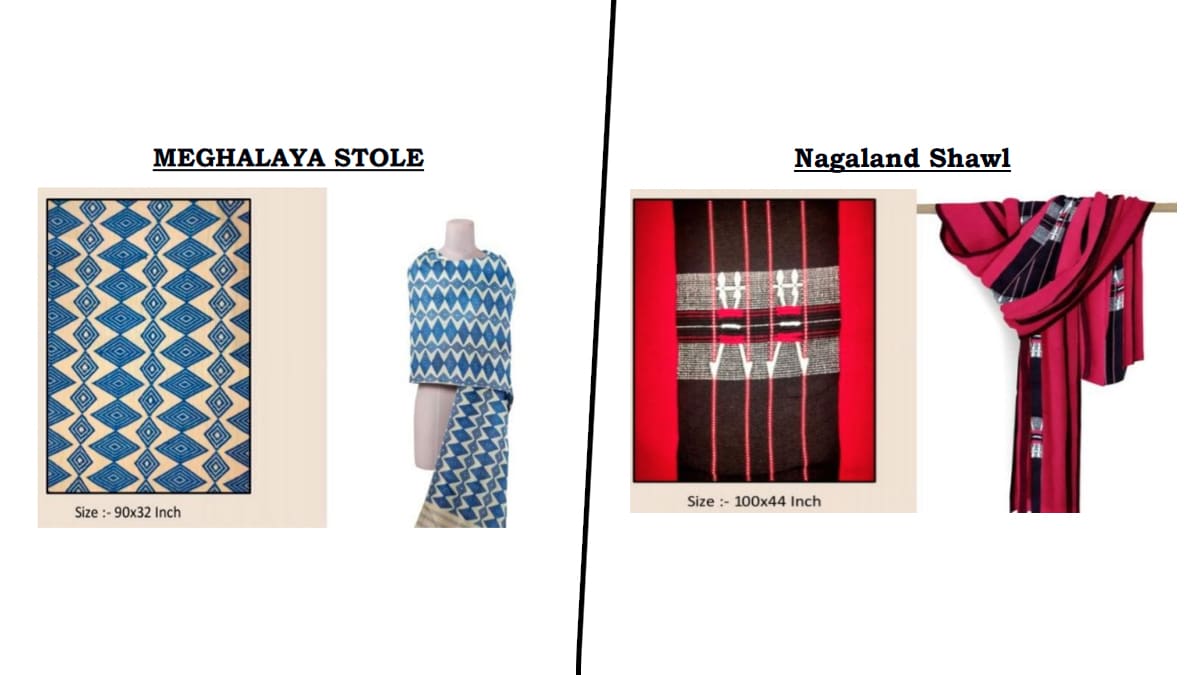About Meghalaya stoles:
- Meghalaya stoles were originally woven for the Khasi and Jaintia royalty, who considered them a symbol of their power and status.
- The stoles were worn during ceremonial occasions and festivals.
- They are made using locally sourced wool, and natural dyes.
- These stoles are famous for their warmth and softness.
- The designs used in the stoles reflected the royal family’s beliefs, myths, and legends, and were a testament to their cultural heritage.
- They were used as a form of diplomatic gift-giving. The Khasi and Jaintia kings would often present these stoles to other rulers as a symbol of goodwill and respect.
About Nagaland shawls:
- These shawls are known for their vibrant colors, intricate designs, and the use of traditional weaving techniques, which have been passed down from generation to generation.
- One of the most striking features of the Naga shawl is the use of geometric and symbolic designs.
- The designs are inspired by the tribe’s myths, legends, and beliefs, with designs having specific meanings and significance.
- The Naga shawl is made from locally sourced materials such as cotton, silk, and wool.
- The colors used in these shawls are symbolic. E.g., Red color symbolizes courage, while black represents mourning.
- The colors use natural dyes made from plants and roots.
- The shawls are often worn during festivals, ceremonies, and other special occasions as symbols of rank and lineage. They are also used as blankets, seat coverings, and even as bags.
- The shawls are known for their durability and can last for several generations.
Q1) Who are Naga people?
Nagas are a hill people who are estimated to number about 2. 5 million (1.8 million in Nagaland, 0.6 million in Manipur and 0.1 million in Arunachal states) and living in the remote and mountainous country between the Indian state of Assam and Burma.
Last updated on June, 2025
→ UPSC Notification 2025 was released on 22nd January 2025.
→ UPSC Prelims Result 2025 is out now for the CSE held on 25 May 2025.
→ UPSC Prelims Question Paper 2025 and Unofficial Prelims Answer Key 2025 are available now.
→ UPSC Calendar 2026 is released on 15th May, 2025.
→ The UPSC Vacancy 2025 were released 1129, out of which 979 were for UPSC CSE and remaining 150 are for UPSC IFoS.
→ UPSC Mains 2025 will be conducted on 22nd August 2025.
→ UPSC Prelims 2026 will be conducted on 24th May, 2026 & UPSC Mains 2026 will be conducted on 21st August 2026.
→ The UPSC Selection Process is of 3 stages-Prelims, Mains and Interview.
→ UPSC Result 2024 is released with latest UPSC Marksheet 2024. Check Now!
→ UPSC Toppers List 2024 is released now. Shakti Dubey is UPSC AIR 1 2024 Topper.
→ Also check Best IAS Coaching in Delhi






















